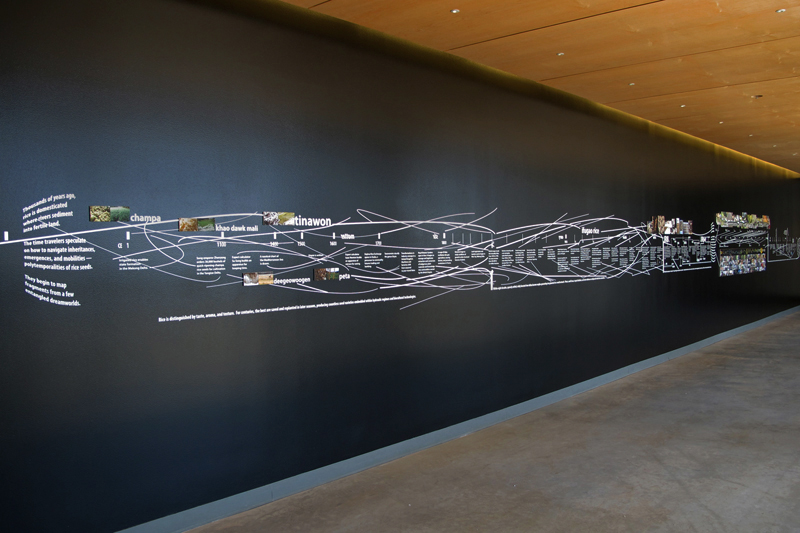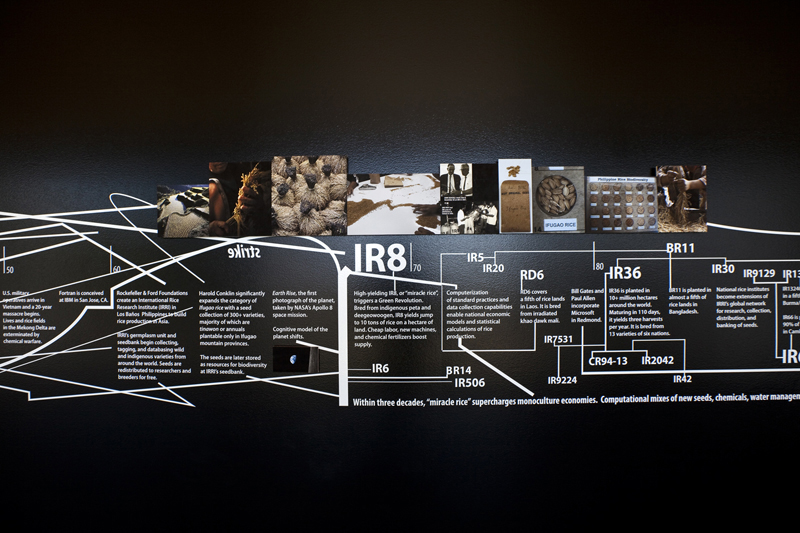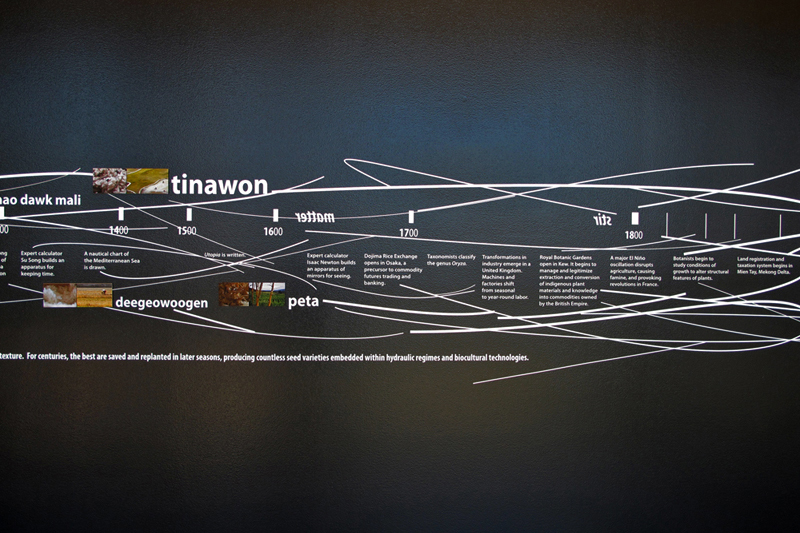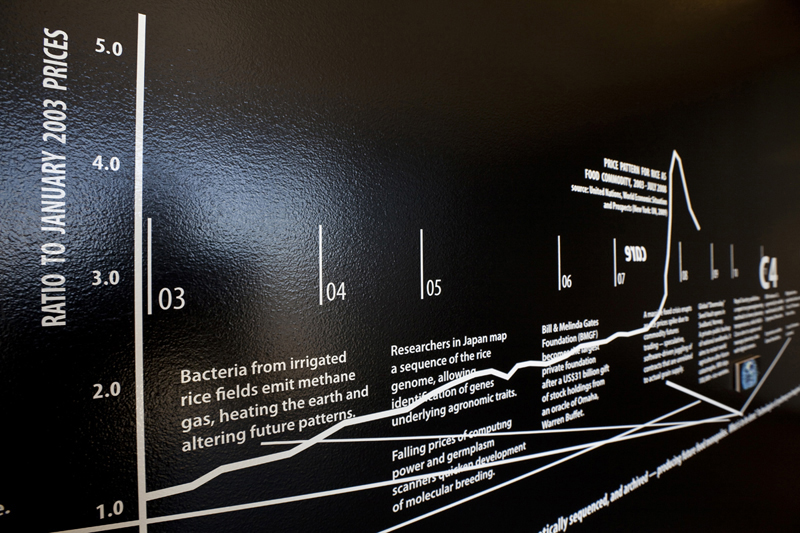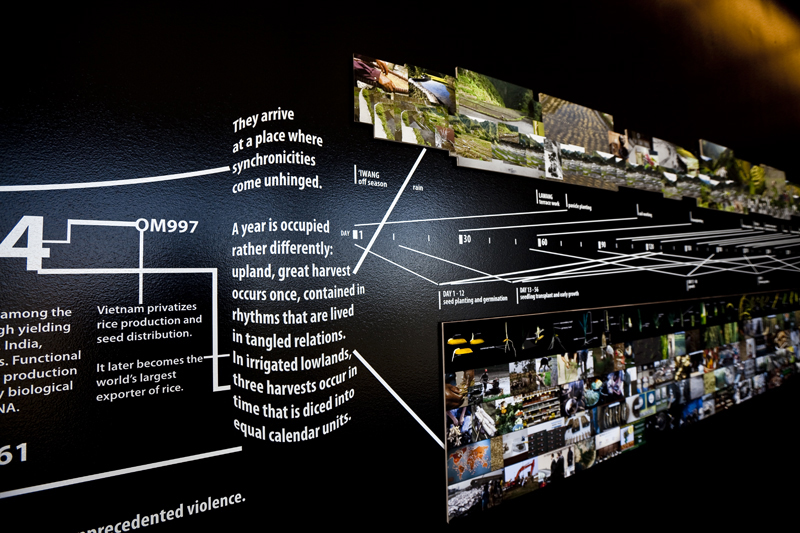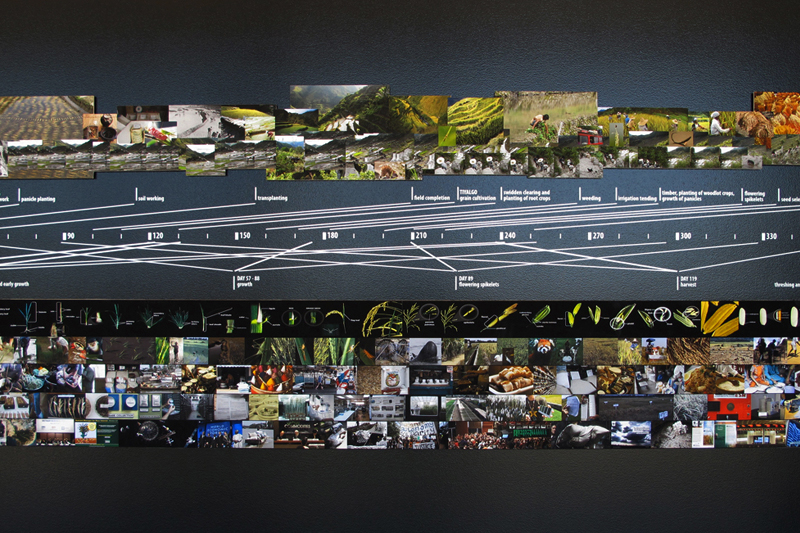ELAINE GAN
Click to view full graphic that enables you to scroll through text and images.
Read about the research in Mapping Rice/Mapping Time, a book chapter in World of Matter, edited by Inke Arns/HMKV (Sternberg Press, 2015).
Play the video below for more about the installation.
